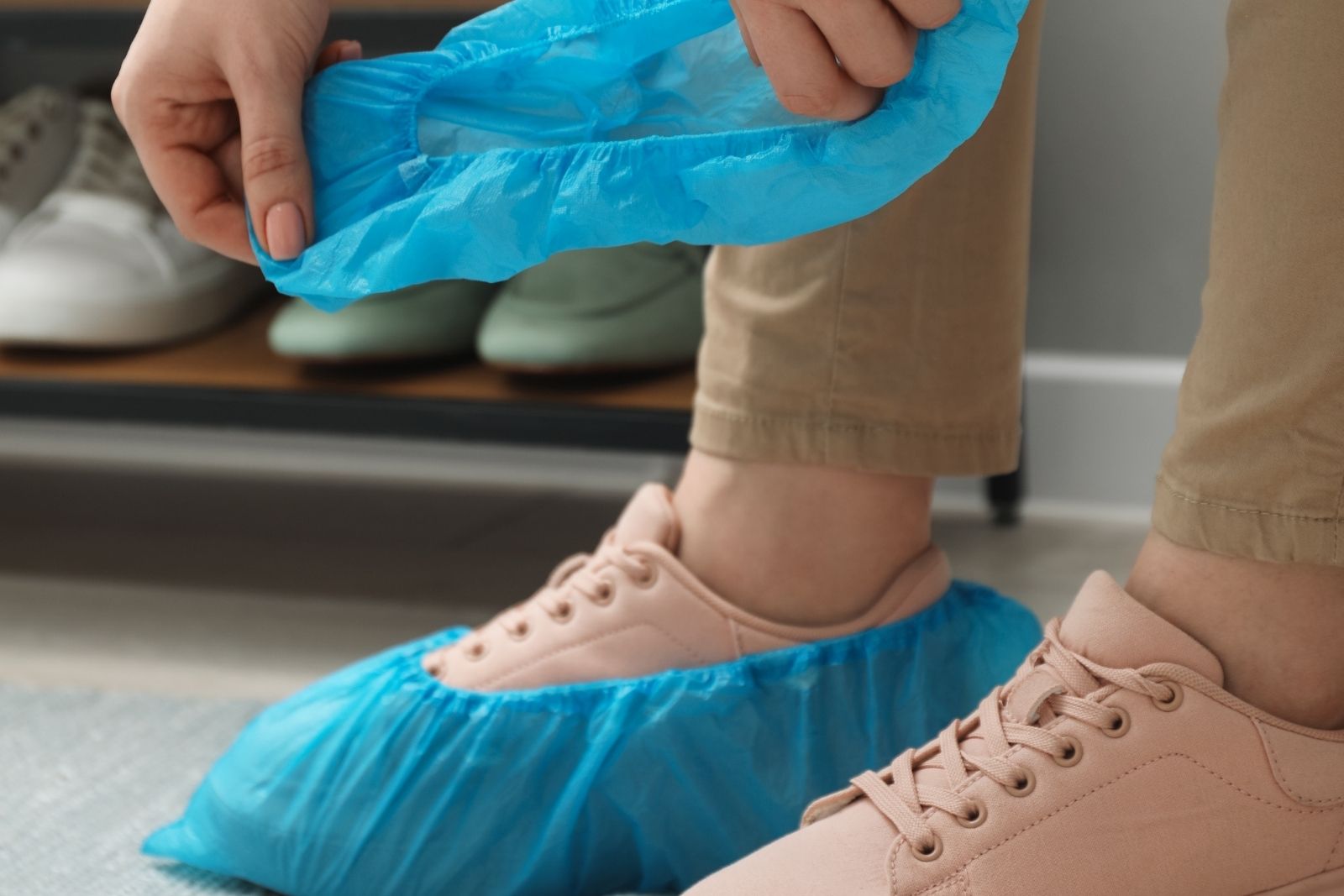
10 Mar Why Do We Call Disposable Shoe Covers Shoe Booties?
You’ve seen them in hospitals, cleanrooms, and construction sites across Canada: those lightweight, disposable covers slipping over shoes. But why do we often call them “shoe booties”? It might seem like a cute nickname, but there’s actually a practical and historical reason behind it. Let’s dig in!
What Are Shoe Booties, Exactly?
Before we dive into the “why,” let’s quickly define what we’re talking about. Shoe booties, also known as disposable shoe covers, are designed to protect environments from contaminants carried on the soles of shoes. They’re typically made from materials like polyethylene, polypropylene, or CPE, offering a barrier against dirt, dust, liquids, and even biohazards.
In industries like healthcare, manufacturing, and construction, maintaining cleanliness is crucial. Shoe booties play a vital role in preventing the spread of germs, protecting sensitive equipment, and ensuring compliance with safety regulations.
The “Bootie” Connection: A Matter of Shape and Function
So, why “booties”? The term stems from the shape and function of these covers.
- Shape: The design of disposable shoe covers often resembles a simplified boot or a “bootie.” They’re designed to encase the entire shoe, extending up the ankle in many cases. This provides a more comprehensive level of protection compared to a simple sole cover.
- Function: Like a baby’s booties, which protect delicate feet, shoe booties protect sensitive environments from contamination. They act as a barrier, preventing external particles from entering and internal particles from leaving.
Essentially, the term “bootie” reflects the protective, enveloping nature of these covers. It’s a descriptive term that resonates with the user’s understanding of how these covers work.
Historical Context and Evolving Terminology
While “shoe booties” is a widely used term, “disposable shoe covers” is also common, especially in formal or technical contexts. The evolution of terminology often reflects the changing needs and applications of these products.
Initially, simple overshoes might have been used for basic protection. As industries became more specialized and hygiene standards increased, the need for more robust, disposable solutions grew. The development of advanced materials and manufacturing techniques led to the creation of the modern shoe bootie.
Today, you’ll find a variety of shoe booties tailored to specific needs:
- Medical-grade booties: Designed for sterile environments, offering high levels of protection against biohazards.
- Industrial-grade booties: Made from durable materials to withstand heavy use and protect against dirt and debris.
- ESD (electrostatic discharge) booties: Used in electronics manufacturing to prevent static electricity damage.
Regardless of the specific type, the core function remains the same: to protect and prevent contamination.
Read more: Why Do Home Service Contractors Need Disposable Booties?
Why Shoe Booties Are Essential in Canada
In Canada, where industries like healthcare, manufacturing environment, and construction are vital, shoe booties are indispensable. They help maintain high standards of cleanliness and safety, contributing to a healthier and more efficient work environment.
- Healthcare: In hospitals and clinics across Canada, shoe booties help prevent the spread of infections, protecting patients and healthcare workers alike.
- Manufacturing: In cleanrooms and production facilities, they prevent contamination of products, ensuring quality and compliance.
- Construction: On construction sites, they protect floors and surfaces from dirt and debris, reducing cleanup time and costs.
- Food Processing: In food processing plants, they ensure that no outside contaminants are brought into the areas that are processing food.
Choosing the Right Shoe Booties
When selecting shoe booties, consider the following factors:
- Material: Choose a material that suits your specific needs, such as polyethylene for basic protection or polypropylene for increased durability.
- Size and fit: Ensure the booties fit comfortably and securely over your shoes.
- Durability: Select booties that can withstand the demands of your work environment.
- Slip resistance: Look for booties with textured soles to prevent slips and falls.
Looking for high-quality shoe booties in Canada? Shoe Cover Magic Canada offers a wide range of disposable shoe covers to meet your industrial and medical needs. We prioritize quality, durability, and affordability, ensuring you get the best protection for your environment. Call us today to explore our selection and find the perfect shoe booties for your needs.


Sorry, the comment form is closed at this time.